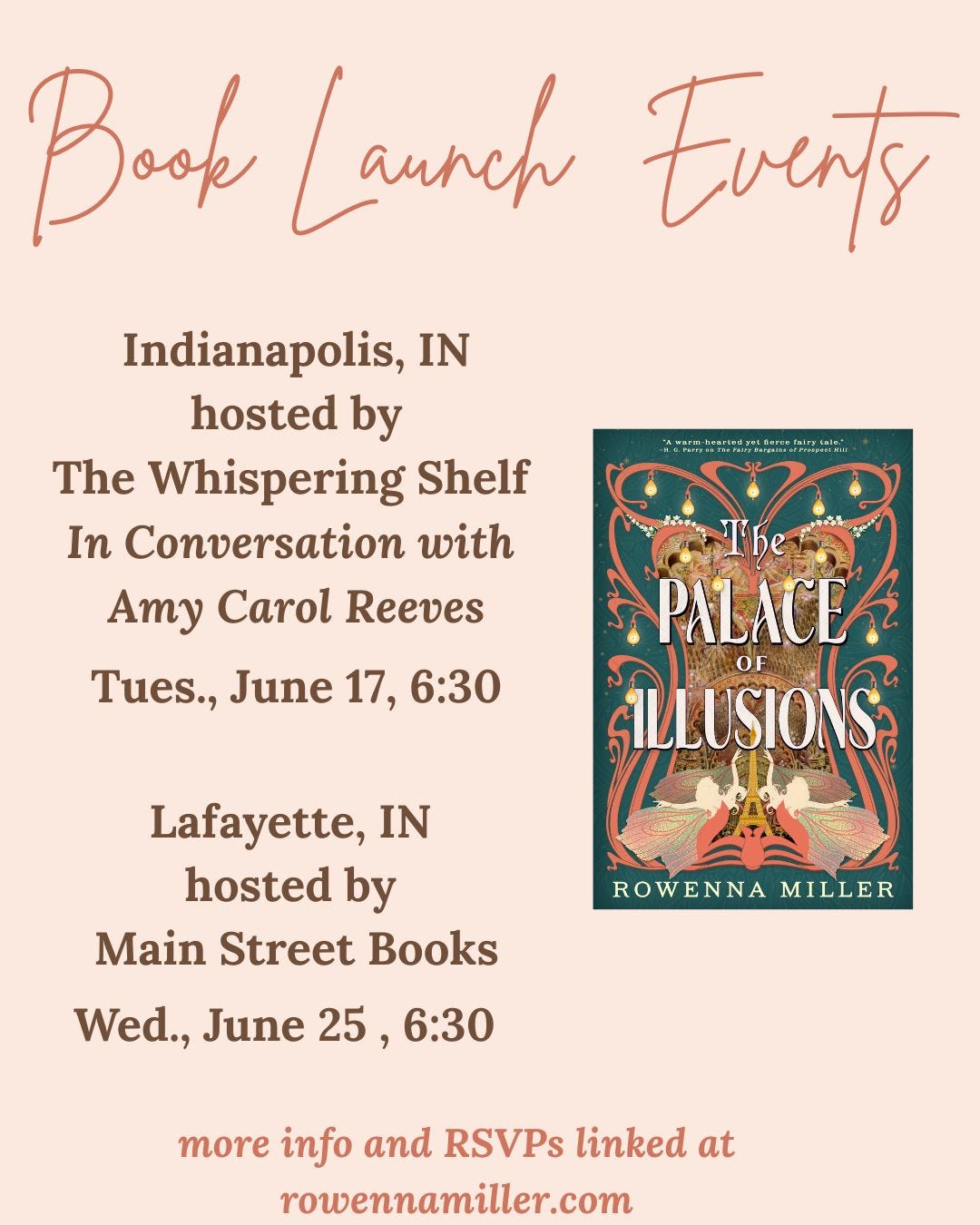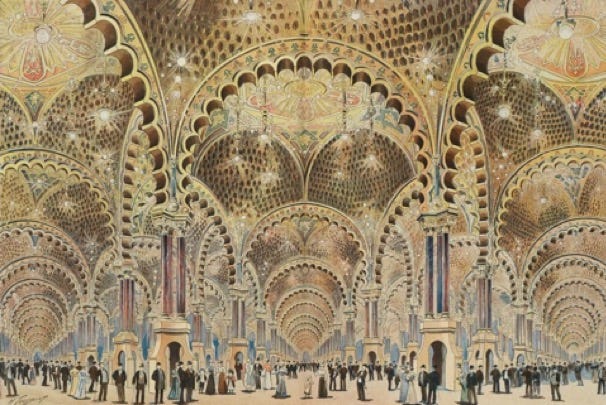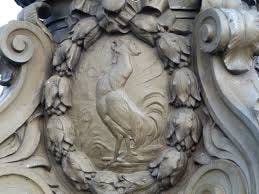Behind The Palace of Illusions: Five Fantastical Facts about The Paris 1900 Exposition
Real magic afoot in the City of Lights
One of the joys of writing historical fantasy is that the line between the historical and the fantastical is often already pretty well blurred for you before you even start adding fairies or alternate worlds or toadstool magic or whatever. The Paris Exposition Universelle of 1900 (also known as the World’s Fair) is one of those spaces that hardly even needs extra fantasy—it was a bonkers, over-the-top experiment in imagination and technology, and every time I picked up a new library book or stumbled across a new trove of photographs on the web, I was overwhelmed with potential material. Some of it made it in, some of it didn’t. So here, I present five of my favorite fun facts uncovered during my research—and how they made it (or didn’t!) into the final version of The Palace of Illusions.
Before I get there—we’re a month out from release! I have two events to announce:
And of course, you’re still welcome to preorder—preorders are love, because they tell the publisher that there’s interest in the book before it’s even out. Not to be too blunt, but it means a lot to authors for you to preorder their books, so I’d be honored if you did—and I have a giveaway for preorders live that gets you free bookmarks, a signed bookplate, and a postcard straight from the Palace of Illusions.
And now—Five Fantastic Facts!
The Paris location itself. If you’re thinking to yourself, isn’t the World’s Fair in Paris where the Eiffel Tower was built for?, you’d be right—but not the 1900 fair. Paris had held the Exposition Universelle in 1889, built the Eiffel Tower for it, and then…in 1900, snatched up hosting rights again. It was unusual to host twice in such quick succession, and Germany was a little peeved, as they had planned to claim the covered turn-of-the-century affair. But Paris swiped it and began laying plans before the Germans could counter, and so the City of Lights hosted the World’s Fair twice in the span of just over ten years. Some buildings from the initial fair were repurposed, but much of the construction was new.
So did squabbling nations make it to my book? Not in any major way, but the pressure that Clara and her coworkers feel to really pull out all the stops is partially this sense of “it had better be REALLY good or everyone will say we couldn’t pull it off again so soon.” Clara’s Palace of Illusions, an attraction that used mirrors and lights to create an illusory infinity, was only one of the intricate yet enormous wonders of the fair.
The Palace of Illusions:
2. The Rooster. The Exposition leaned into the “new century” theme and one of the symbols that they used was…a rooster.
Not that rooster. That’s my rooster, Shortcake, strutting his stuff, not giving two shakes of his tail that he’s like 1.4 pounds.
No, this rooster:
You know, like crowing at the dawn of a new century? Makes sense, right? Anyway, you can still find the rooster in at least one spot in Paris—on teh Pont Alexandre III, which crosses the Seine near the Grand Palais and Petit Palais built for the 1900 fair. Decorative medallions on the bridge include the rooster:
Any roosters in Palace? No, I refrained…though Clara does comment on the highly decorative Pont Alexandre III.
3. Captain Picard? There’s a lot recorded on who was on the Board of the Exposition Universelle, and the guy in charge? Picard. Alfred Picard, to be exact.
(Is it just me, or could there be a slight…familial resemblance with Jean-Luc?)
Does he make it in the book? Only in passing. Clara and her colleagues are toiling away in one of the offices of an architect who won a bid to design the Palace of Illusions building for the Exposition. There’s a lot less on those folks, understandably—but for a writer, this is great, because it leaves space for invented characters and tensions! Still, just a confirmation—no, the inclusion of a Picard in the book wasn’t a veiled Star Trek reference, it was a real guy.
Moving Sidewalks. If you thought that moving sidewalks were an invention for modern airports, nope! You can thank the Paris Exposition Universelle! The central fair area was outfitted with a moving sidewalk in a loop, with nine stations that let fairgoers hop on at one spot and hop off at another. A key innovation missing from the terminals of our airports—different speeds! Called the “Rue d’Avenir” or “Street of the Future,” the sidewalks had slow and quick belts—you’d step onto the slower section and then could move onto the quicker belt that skimmed along at about 5 miles per hour to your desired station, or onto a fixed portion on the outside band to take in the view.
Check out this video of the moving sidewalks (restored and colorized): https://youtube.com/shorts/PfRemQ4RzJE?si=YmH41e3ith0Zphjl
Did these moving marvels make it into the book? Sadly, no—I couldn’t determine if they were completed in time for the opening (some attractions weren’t), but I really considered the possibility of a chase scene on the moving loop around the Fair!
The Fairy Electricity. What made the moving sidewalks possible, and much of the rest of the fair’s attractions, possible was electricity. Electricity was the unofficial theme of the fair, with “La Fée Electricité” (the Fairy Electricity) making the already opulent buildings and expansive fairgrounds sparkle with new magic.
The Fairy made Paris a true City of Lights for the Exposition, and some promotional materials depict her lighting the landscape:
Is the Fairy Electricity in the book? In many ways—Clara’s great challenge in crafting her Palace of Illusions is the difficulty of working with electrical wiring, and her coworker and friend Fritz introduces her to the concept of The Fairy Electricity. Most of all, the fair shines with her at every corner—and if you want, you can imagine that the dancers on the cover of the book are, really, the fairy:
Thanks for letting me share some of the historical inspiration behind the book—and I hope to see you at a launch event in June!










